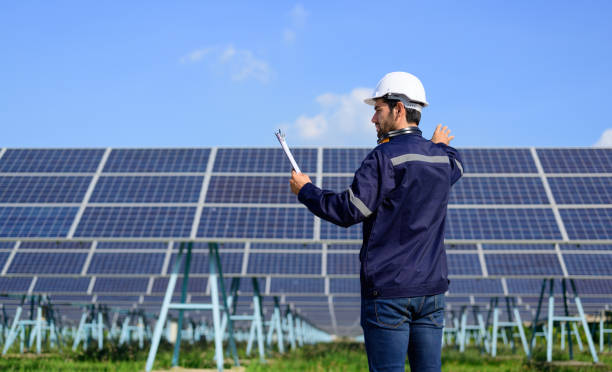Solar energy holds enormous potential, but unlocking that potential depends largely on how well a solar power system is planned before installation. Many homeowners and businesses are drawn to the appeal of renewable energy savings without realizing that improper design can reduce efficiency, cause long-term technical issues, and delay the return on investment. A well-designed system doesn’t just generate power—it maximizes performance while minimizing maintenance and waste.
Whether you’re powering a small home or a large commercial building, the value of strategic planning before placing panels on your roof or property cannot be overstated. Solar power companies Antioch emphasize that proper planning sets the foundation for performance, safety, and long-term savings. We will explore why design is the cornerstone of a successful solar installation and how each decision—from panel placement to energy consumption analysis—can impact the long-term performance of your system.
Related insight: This article dives even deeper into the topic.
Why Design Comes First in Solar System Success
Accurate Energy Needs Assessment
Understanding how much energy your household or facility consumes on average is critical. This first step determines how many solar panels you need, not just how many you want. Without evaluating your monthly and seasonal electricity usage, it’s easy to end up with a system that either underperforms or costs more than necessary. Solar design should begin with at least 12 months of energy bills. This helps identify peak loads, time-of-use trends, and whether battery storage is needed.
Oversizing your system may lead to wasted energy or unmet payback expectations if local net metering policies don’t provide sufficient credit. Undersizing could mean higher utility bills that offset your solar investment. A thorough needs assessment ensures your system is sized correctly, tailored to your lifestyle, and ready to meet energy goals efficiently. It’s a technical process, but skipping it results in guesswork, and guesswork has no place in a long-term energy solution.
Site Evaluation and Shading Analysis
Every property is different. A house in Antioch may receive full sun for six hours a day, while trees or nearby structures might partly shade a neighboring property. That’s why a detailed site analysis is essential before designing the system. Roof condition, tilt, orientation, and potential obstructions all influence energy production. Even a small amount of shade can significantly reduce panel performance, especially if the system is not designed with microinverters or optimizers. Evaluating the site also includes confirming whether the roof can support the weight of the system.
If your roof needs repair or reinforcement, that must be addressed first. Skipping the site analysis can lead to underperformance or costly mid-project adjustments. A system designed with a clear understanding of solar access ensures higher reliability, smarter investment, and ultimately, a better return on investment over the system’s lifespan.
Electrical Infrastructure and Load Considerations
Designing a solar system also involves understanding the existing electrical infrastructure of the building. The main service panel must be compatible with the solar inverter; if it’s outdated or undersized, upgrades may be necessary. Failing to address this can lead to safety risks and code compliance issues. In Antioch and surrounding areas, building codes often require that solar connections meet certain specifications related to system size and fire safety.
Additionally, electrical load balancing is crucial if you’re incorporating features such as electric vehicle chargers or battery storage. A professional design will take these variables into account, ensuring seamless integration with current systems. A poorly matched setup can trip breakers, reduce system performance, or even damage appliances. Designing the system with the full electrical picture in mind helps avoid hidden costs and keeps your solar project on track from both a technical and regulatory standpoint.
Local Climate and Seasonal Production Factors
Solar panels behave differently depending on the climate and seasonal variations. In Antioch, summers are hot and dry, while winters are cooler and occasionally cloudy. These fluctuations affect the amount of power generated by power panels from month to month. A strong design incorporates weather modeling tools to estimate production throughout the year, not just during peak summer sunshine. It also accounts for the temperature’s impact on panel efficiency, as performance can dip during extreme heat.
Factoring in seasonal data ensures that your system isn’t just powerful during the summer, but also stable and productive year-round. It also helps determine whether battery storage would add meaningful value for overnight or cloudy-day usage. Ignoring these patterns might leave you over-reliant on grid power during certain months or result in excessive surplus when it’s least needed. By aligning design with local environmental conditions, you create a solar setup that remains productive regardless of the weather.
Design is not a formality—it is the blueprint for every successful solar installation. From determining your power needs to ensuring your roof is ready and your system complies with local laws, each step in the planning process significantly influences the outcome of your solar investment. Skipping or rushing design means risking inefficiency, costly fixes, and missed opportunities to optimize energy savings.
For residents of Antioch and surrounding areas, working with a team that understands the local environment, codes, and electrical demands makes all the difference. Taking the time to prioritize system design leads to a more reliable, cost-effective, and future-ready solar power experience. With the right plan in place, you’re not just generating energy—you’re powering a smarter, cleaner future.
Ready for a deeper dive? Our most popular pieces live at 2A Magazine.







